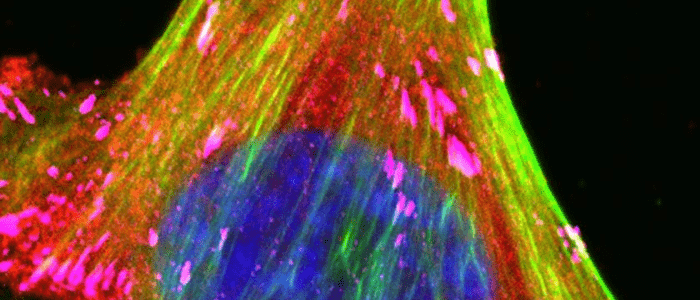What tucatinib means for oncologists and their patients: an interview with Erika Hamilton

Please introduce yourself and tell us about your career to date.
I’m Erika Hamilton and I lead Breast Cancer Research at Sarah Cannon Research Institute at Tennessee Oncology in Nashville (TN, USA). I am also a partner within Tennessee Oncology, PLLC. I joined Sarah Cannon in 2013 and focus on breast cancer and gynecologic cancer. I care for patients receiving standard therapies and am the primary investigator on many of our late Phase breast cancer studies and in our Phase I Drug Development Unit. I am passionate about improving the care for people facing breast cancer and bringing new and exciting therapies to the communities we serve.
How has the treatment landscape for locally advanced or metastatic HER2-positive breast cancer evolved over the last 5 years?
The biggest story in HER-2-positive advanced disease is around two drugs approved approximately a year and a half ago – trastuzumab deruxtecan and tucatinib. They are very different drugs but are both highly active in patients facing HER-2 positive disease. Our algorithm of treatment was highly scripted in first and second line (with first-line TCHP and second-line T-DM1), but third line and beyond was less clear with no single standard of care. Trastuzumab deruxtecan is a novel antibody–drug conjugate and was approved in December 2019 for patients with HER-2-positive metastatic breast cancer (MBC) and showed an impressive response rate and duration of response, which has only improved with even further follow-up. On the other hand, tucatinib, which was approved in early 2020, is a tyrosine kinase inhibitor that is specific to HER-2 (sparing EGFR) and given in combination with capecitabine and trastuzumab for patients with second line and beyond HER-2-positive MBC. A unique aspect of tucatinib is its excellent central nervous system (CNS) activity, having activity in not only those with stable brain metastases, but also those that are untreated or progressing.
What hurdles need to be overcome to continue the advancement HER2-positive breast cancer treatment?
It is exciting to have two novel agents in this space, but we continue to need more for our patients. We know patients whose cancers are driven off the HER-2 protein often do well for some time with continued targeting of the HER-2 pathway, so I remain excited about a variety of drugs in development from novel antibody-drug conjugates, to bispecific antibodies, to tyrosine kinase inhibitors.
Brain metastases are also an area that continues to be problematic. Up to 50% of patients with HER-2 metastatic disease will have to face this complication over their disease course and unfortunately many of our drugs are not as active in the CNS as they are in the rest of the body. Drug discovery in this space will be critical.
Finally, we continue to grow in our recognition that not all cancers (even those that are HER-2) are the same. Our treatments, therefore, should not be one-size-fits-all either. Tumors that express hormone receptors in addition to HER-2, for example, may respond to therapies in the endocrine pathway, such as CDK4/6 inhibitors in addition to HER-2 agents. We continue to strive for additional therapies with fewer side effects for our patients.
Tucatinib has recently been approved by the European Commission for the treatment of patients with locally advanced or metastatic HER2-positive breast cancer. Could you tell us more about the use of tucatinib in HER2-positive breast cancer?
HER2CLIMB tested capecitabine and trastuzumab with or without tucatinib in a large, randomized trial. The addition of tucatinib not only improved progression free survival (PFS) and overall survival (OS), but also PFS and OS in patients with brain metastases. Most of the side effects of the regimen come from the capecitabine backbone with known hand-foot syndrome, GI disturbances and fatigue. The addition of tucatinib also increases a small rate of reversible liver function test abnormalities. Based on this data, tucatinib was approved for second line and beyond HER-2 positive MBC.
What will this approval mean in the clinic and for patients with HER2-positive breast cancer?
Not only does this tucatinib regimen provide a great option for patients with brain metastases, but there is also benefit in OS for patients without brain metastases. Therefore, the tucatinib regimen is a good option for all regardless of brain metastases. I am also hopeful that perhaps as we use this CNS-effective drug earlier in the disease course, that we could start to see fewer brain metastases. This ‘prevention’ possibility is something that still needs to be tested.
In your opinion, how will the treatment landscape for HER2-positive breast cancer continue to evolve over the next 5 years?
I think we will see less use of ‘naked’ chemotherapy and increasing use of therapies like antibody–drug conjugates, bispecific antibodies and truly targeted drugs. This enables us to target the tumor specifically, which often translates to a better side effect profile for patients. I also think we will see some of our known agents moving earlier in the disease course, such as trastuzumab deruxtecan and tucatinib – maybe even into the adjuvant curative setting.
The opinions expressed in this interview are those of the author and do not necessarily reflect the views of Oncology Central or Future Science Group.